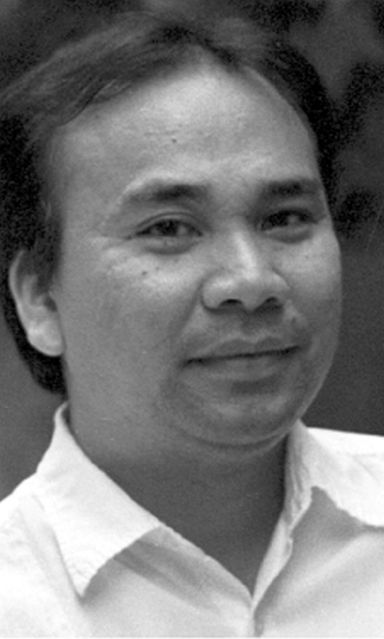
BERSALES
The clash in Inabanga, Bohol, the other day between government forces and the terrorist group Abu Sayyaf brings to mind the dreadful centuries of Moro slave raids that decimated the coastal towns of the Visayas and Luzon between 1599 and the mid-1800s.
Inabanga and also Tagbilaran, among other coastal settlements of Bohol, suffered so much from these raids which is why their churches are perched on top of a steep hill because this allowed the Bol-anons then some protection and a lead time to defend themselves or run farther inland should the arrival of the 6-tonner Moro “pancos” or “paraos” come undetected. Bantayan up north suffered its most dreadful decimation in 1600 and in 1636, just when it had recovered another raid once again sacked the town. Boljoon and its church were burned in 1782 following another Moro raid. The most devastating swept the Visayas in 1754, when the while year was marked by the sacking of towns and the capture of thousands of Bisayans to be sold as slaves in Jolo, Makassar, Amboina and Ternate. That is why when you look at Cebu, for example, in the 1600s and 1700s, you find only a handful of towns existing, most of them closer to the capital. Almost all the towns of Cebu would be established formally only after the 1830s when these dreadful marauders were finally checked with the building of “baluartes” or watchtowers and the establishment of fleets of barangayan boats armed with light cannons following the lead of the great Augustinian friar of Boljoon, Julian Bermejo early in the century.
A picture of the devastation accompanying the sudden arrival of these Moro pancos is detailed for us in the book Labor Evangelica by the Jesuit Francisco Colin during a raid in 1605: “When informed by an Indio that the Moros were approaching Baybay, Fr. Cristóbal Giménez and his companion fled, taking what they could to hide in the forest with the other faithful, eating nothing for two or three days other than wild fruits. The Moros captured 60 Baybayanons and 90 Ormocanons. There were many dead, and no one was left standing. After the danger had passed, the priest went to the island of Poro where the enemies hunted the natives like they often do with deer through the cogon grasses, leaving an enormous conflagration, death and ruin.
“He was met with such a horrible sight, so much destruction in the midst of the stench of so many putrefied unburied bodies. Some survivors, more like walking skeletons, appeared to him, as if coming out of the concavities of tombs. They told him how during that fateful Sunday of October 22, the Indios had gathered in the chapel and were praying when the marauders aboard 18 boats surprised them…Many were killed in their homes; others on the road at the foothills of the mountain because the island was small. There were 160 who were captured. They (the pirates) took the children by their feet, from the arms of their mothers, lifted them up and, smashing their heads against the rocks, scattered their brains on the ground. They also mentioned that after they (the raiders) killed a man, they ripped his entrails, salted the liver, then squeezed lemon juice on it and ate it raw, boasting of their ferocity. Beasts indeed must have been those who devoured men’s bowels! After taking the meat of the victims, they filled several tinajas tightly of it, for food during their return home.”
Like the Abu Sayyaf today, these raiders carried out their terror not because of religion but in order to make money, following the dislocation of their usual trading routes with the onset of Spanish colonial rule. One can say that nothing much has changed and perhaps the statement that Governor General Sebastian Hurtado Corcuera made way back in 1637 as he was about to carry out a successful military campaign against Jolo from Lamitan, Basilan, still rings true today: that the only way to defeat these terrorists was to go to Sulu and attack their lairs with all the might of the sword. This he did and we should learn from him if we are to avoid getting these terrorists on our own turf.
* * *
The 75th anniversary of the start of the Japanese Occupation of Cebu came and went last Monday with neither a whimper nor a blast. We rightfully commemorated the 75th anniversary of the Fall of Bataan the day before, but I would have expected that at least someone in City Hall would have remembered that it was precisely that tragic defeat in the peninsula that emboldened the Japanese military hierarchy to order two divisions to proceed to Cebu that same day and arrive the following day in Barili, Argao and, you guessed it, Talisay.
Last Monday also marked the 75th anniversary of the capture of Chief Justice Jose Abad Santos somewhere in Barrio Tubod, Barili, by the Imperial Japanese Forces and also the start of the constant tug-of-war between the Japanese civilian propagandists in Manila who wanted to save Abad Santos and their Japanese militarist counterparts there who wanted everyone to cooperate or have their heads cut off. Abad Santos was the acting president of the Philippine Commonwealth at that very moment of his capture since President Manuel Quezon and Vice President Sergio Osmeña were in the US. As history gloriously records it, the Chief Justice refused all entreaties of the Japanese and chose to rather die than collaborate. And so nearly a month later, on May 2, 1942, four days before Corregidor fell, he was executed in Malabang, Lanao del Sur.